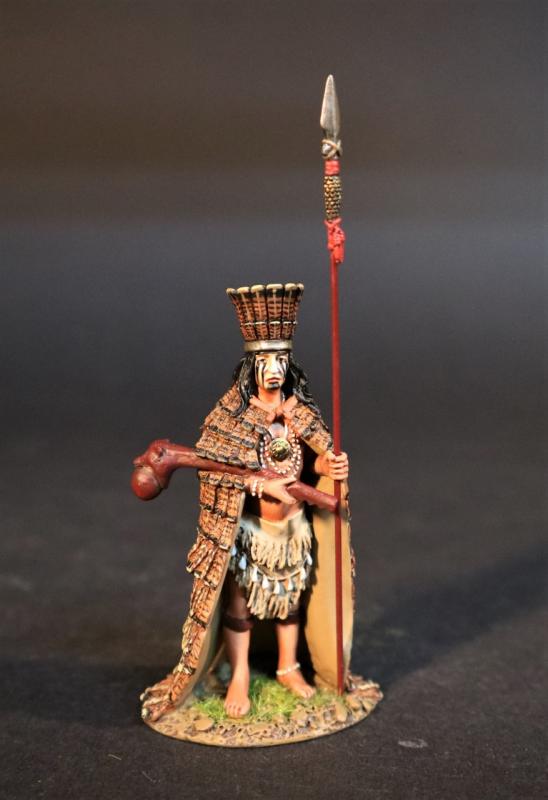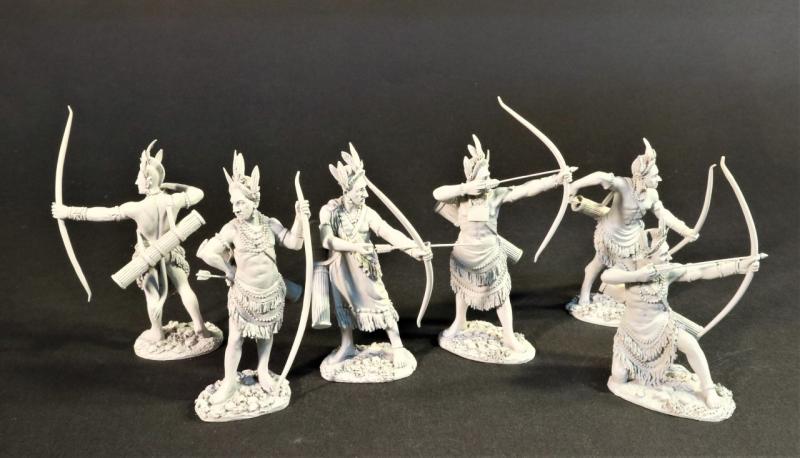Powhatan Chief Opchanacanough, The Powhatan, The Conquest of America--single figure
$54.00
Item Number: POW-01
Powhatan Chief Opchanacanough, The Powhatan, The Conquest of America
THE POWHATAN
The Powhatan people may refer to any of the indigenous Algonquian people that are traditionally from eastern Virginia. It is estimated that there were about 14,000-21,000 Powhatan people in eastern Virginia, when English colonists established Jamestown in 1607.
In the late 16th and early 17th centuries, a “Mamanatowick” (paramount chief) named Wahunsenacawh created an organization by affiliating 30 tributary peoples, whose territory was much of eastern Virginia. They called this area Tsenacommacah (“densely inhabited land”). Wahunsenacawh came to be known by English colonists as “The Powhatan Chief”. Each of the tribes within this organization had its own Weroance (leader), but all paid tribute to the Powhatan Chief.
After Wahunsenacawh’s death in 1618, hostilities with colonists escalated under the chiefdom of his brother, Opchanacanough, who sought in vain to expel encroaching English colonists. His large scale attacks in 1622 and 1644 met strong reprisals by the colonists, resulting in near elimination of the tribe. By 1646, what is called the Powhattan Paramount Chiefdom by modern historians had been decimated.
More important than the ongoing conflicts with the English colonial settlements was the high rate of deaths the Powhattan suffered due to new infectious diseases carried to North America by Europeans, such as measles and smallpox. The native Americans did not have any immunity to these, which had been endemic in Europe and Asia for centuries. The wholesale deaths greatly weakened and hollowed out the native American societies.
By the mid-17th century, the leaders of the colony were desperate for labor to develop the land. Almost half of the European immigrants to Virginia arrived as indentured servants. As settlements continued, the colonists imported growing numbers of enslaved Africans for labour. By 1700 the colonies had about 6,000 black slaves, which was one-twelfth of the population. After Bacon’s Rebellion in 1676, the colony enslaved the native Americans for control. In 1691, the House of Burgesses abolished native slavery; however, many Powhatan were held in servitude well into the 18th Century.
There are several detailed accounts of the Powhatan peoples, but we are fortunate to have the exquisite water-colours of John White, who was the governor of the second Roanoke Settlement. Luck would have it he was gathering supplies in England when his colony vanished.
The main weapon of all the Indians faced by the English settlers during this period was the longbow. This measured 5-6ft. and was made from witch-hazel or hickory. It was noted that the Indian bows were quick, but not very strong or accurate.
Due to be released in DECEMBER 2022.

